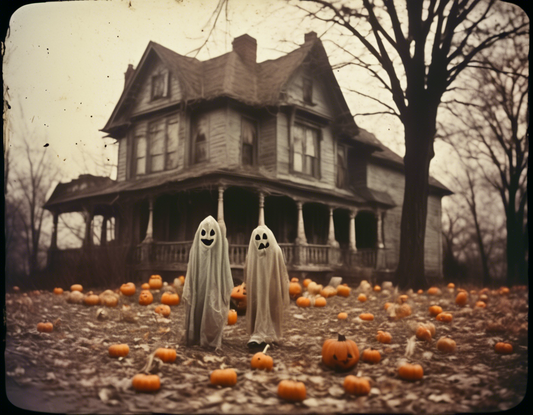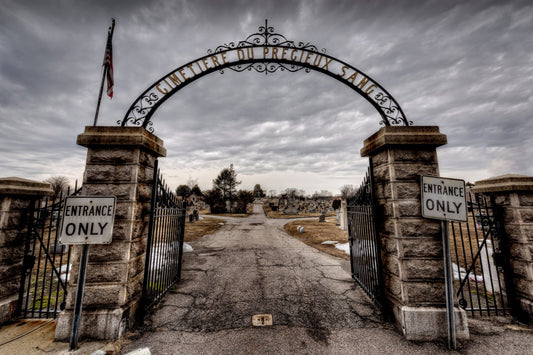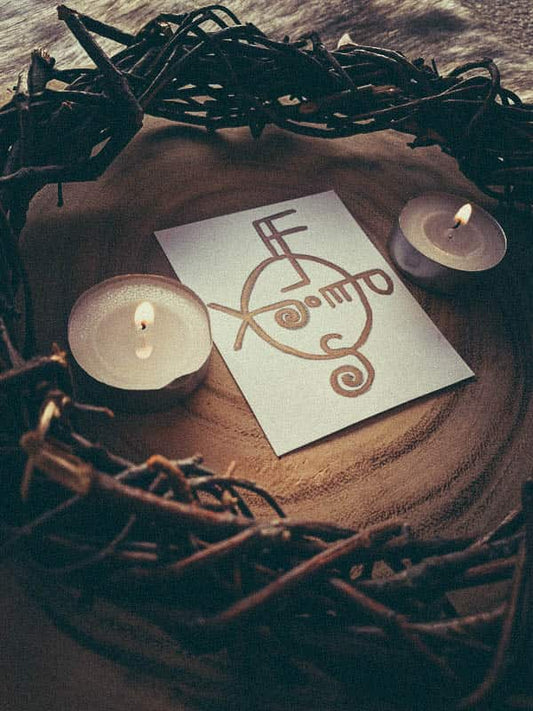
With the advent of Christianity, the Celtic celebration of Samhain gradually became linked with All Saints' Day and All Hallows' Day. Over time, the night of Samhain adopted various names, such as the Feast of All Saints, the Feast of All Hallows, the Solemnity of All Saints, Hallowmas, and ultimately Halloween.
Like many Pagan traditions, the origins and customs of Samhain faced suppression and rebranding as attempts were made to erase them. The Church even prohibited all celebrations associated with Samhain. However, in 1928, the Church of England officially reinstated All Hallows, a Christian holiday that coincides with Samhain.
It is believed that during this period, the veil separating the living from the spirit world is at its thinnest, facilitating interactions between the two realms. To ward off malevolent spirits, people would light bonfires and don costumes for disguise. They also offered food and drink to honor and appease their ancestors.

Samhain is a significant festival in the Celtic calendar, marking the end of the harvest season and the beginning of winter. Traditionally celebrated from the evening of October 31st to November 1st, it symbolises a time of transition and reflection.
Historical Background
Celtic Calendar: Samhain was one of the four major Gaelic festivals, along with Imbolc, Beltane, and Lughnasadh. It signalled the end of the harvest and the onset of the darker half of the year.
Rituals and Beliefs: The Celts believed that on the night of Samhain, the boundary between the living world and the spirit world was particularly thin, allowing spirits, both benevolent and malevolent, to roam freely. This belief led to various rituals aimed at honouring ancestors and protecting against harmful spirits.
Bonfires: Large bonfires were lit to symbolise warmth and light during the dark winter months. People would gather around these fires, and in some traditions, they would jump over the flames as a form of purification and protection.
Traditions and Customs
Costumes and Disguises: To protect themselves from wandering spirits, people would dress in costumes or masks, often made from animal skins or other natural materials. This practice allowed them to blend in with the spirits or confuse any harmful entities.
Offerings: Food and drink were commonly offered at altars or placed outside homes to appease the spirits of the deceased. This act of giving was believed to ensure that ancestors would bless the household with good fortune in the coming year.
Divination: Samhain was also a time for various forms of divination. People would engage in rituals to gain insights into the future, particularly concerning matters of love and marriage. Games like apple bobbing and the use of nuts in fortune-telling were common practices.
Modern Influence
Halloween: The influence of Samhain can be seen today in Halloween, which incorporates elements of the ancient festival. The name "Halloween" is derived from "All Hallows' Eve," referring to the eve of All Saints' Day. Many modern Halloween customs, such as trick-or-treating and carving pumpkins, have roots in these ancient traditions.
Cultural Revival: In recent years, there has been a revival of interest in Samhain and other Pagan traditions. Many modern Pagans and Wiccans celebrate Samhain with rituals that honour their ancestors and reflect on the cycle of life and death.
Spiritual Practices: For many, Samhain is a time for introspection and connection with the spirit world. Rituals may include lighting candles in remembrance of loved ones, creating altars with photographs and mementos, and participating in community gatherings to share stories and celebrate the lives of those who have passed.
Samhain represents a rich tapestry of history, spirituality, and cultural significance, embodying themes of life, death, and the cyclical nature of existence. As societies evolve, so too do the practices and interpretations of this ancient festival, allowing it to remain relevant in contemporary culture.

The celebration of Samhain is rooted in various key beliefs and practices that reflect the ancient Celts' understanding of life, death, and the natural cycles of the world.
The ancient Neolithic inhabitants of Ireland possessed a profound knowledge of the natural cycles of the sun and moon, which is reflected in the alignment of their 6,000-year-old passage tombs in relation to the times of Samhain and Imbolc. Notable locations for these tombs include Maes Howe in Orkney and Newgrange in eastern Ireland. The complex origins of Samhain can be traced back to age-old Celtic traditions, which were intricately connected to nature and the changing seasons. Herodotus, in 'The Histories,' notes the presence of the Celts around 517 BCE.
Some of the primary beliefs associated with Samhain:
Thin Veil Between Worlds: One of the core beliefs of Samhain is that during this time, the boundary between the physical world and the spirit world is at its thinnest. This allows for easier communication and interaction between the living and the dead.
Honouring Ancestors: Samhain is seen as a time to honour and remember loved ones who have passed away. Many rituals and practices focus on connecting with ancestral spirits, inviting them to join in the celebrations, and offering them food and drink as a sign of respect and remembrance.
Protection from Spirits: With the belief that malevolent spirits could wander freely during Samhain, people would take precautions to protect themselves. This included lighting bonfires to ward off evil spirits and dressing in costumes or disguises to confuse or blend in with any wandering entities.
Cycles of Life and Death: Samhain marks the end of the harvest season and the onset of winter, symbolising the cyclical nature of life, death, and rebirth. It reflects the belief that death is not the end but a transition to another phase of existence.
Divination and Prophecy: Samhain was considered an auspicious time for divination and seeking insights into the future. Various methods, such as casting nuts into the fire or interpreting dreams, were used to gain knowledge about matters like love, health, and prosperity in the coming year.
Community and Gathering: Samhain served as a time for communities to come together, share stories, and celebrate the harvest. The communal aspect reinforced social bonds and collective memory, as people shared in the rituals and festivities.
Transformation and Renewal: The festival embodies themes of transformation, as it signifies the transition from the active, vibrant energy of summer to the introspective and dormant energy of winter. This period encourages reflection and preparation for renewal in the spring.
Connection to Nature: The Celts had a deep reverence for the natural world, and Samhain is a reminder of the cycles of nature. It emphasises the importance of aligning one’s life with the rhythms of the earth, acknowledging the changing seasons, and understanding the interconnectedness of all life.
Feasting and Celebration: The end of the harvest season was a time of plenty, and feasting was an integral part of the celebrations. Sharing food and drink during Samhain not only honored the spirits but also brought communities together in gratitude for the harvest.
These beliefs collectively contribute to the rich tapestry of traditions and practices associated with Samhain, making it a significant festival that resonates with themes of memory, protection, community, and the cyclical nature of existence.





